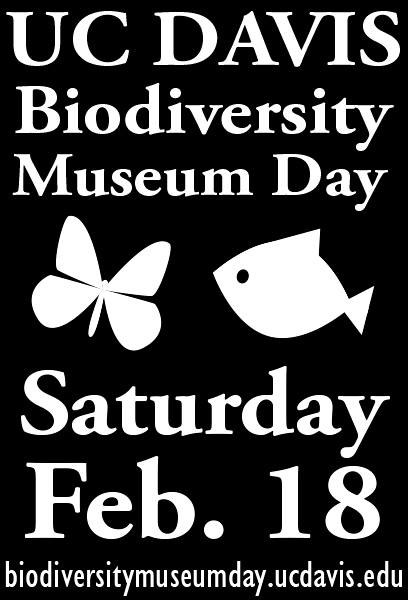
The family friendly, science-based event takes place Saturday, Feb. 18 when 12 museums or collections will be open to the public. It's all free: free admission, free parking, and, of course, free encounters with the scientists.
The event, open from 9 a.m. to 4 p.m., will "showcase natural history, biodiversity and the cultural-ecological interface," said Biodiversity Museum Day coordinator Tabatha Yang, education and outreach coordinator for the Bohart Museum of Entomology. All collections are within walking distance on campus except for the Häagen-Dazs Honey Bee Haven on Bee Biology Road for the Raptor Center on Old Davis Road.
Someone asked: "Are there any special activities for youths ages 6 to 10?"
Yes, lots of activities will interest this age group, as well as other age groups.
For example, you can "pet" walking sticks, Madagascar hissing cockroaches and tarantulas at the live "petting zoo" at the Bohart Museum of Entomology, located in Room 1124 of the Academic Surge Building on Crocker Lane.
You can marvel at the huge dinosaur bones in the Paleontology Collection in the Earth and Physical Sciences Building on Crocker Lane.
You can see carnivorous plants "swallow" flies and other unsuspecting insects in the Botanical Conservatory, off Kleiber Hall Drive.
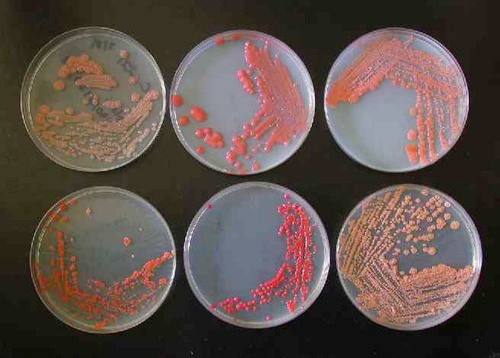
You can get up close to hawks and other birds of prey and watch demonstrations at the California Raptor Center on Old Davis Road. You can also check out the Raptor Center museum and even pick apart owl pellets to look for bones.
You can see prehistoric tools and watch demonstrations of flint knapping and atlati throwing at the Anthropology Museum display, Young Hall, central campus.
You can catch bees and other insects in a vacuum device for a catch-and-release activity at the Häagen-Dazs Honey Bee Haven on Bee Biology Road, and get a close-up view of the queen bee, workers and drones in the bee observation hive.
You can engage in leaf rubbing activities, olive wreath crown making and some interactive activities dealing with erosion control and composting at the Arboretum and Public Garden, headquartered on LaRue Road.
You can also look through the portable Scanning Electron Microscope (SEM), borrowed from Hitachi. It will be located in the Academic Surge Building, either in the Bohart Museum or in the Wildlife Room, said Yang.
The UC Davis Biodiversity Museum Day is also a good time for prospective students to learn about possible majors.
The following will be open from 9 a.m. to 1 p.m.:
- Arboretum and Public Garden, headquartered on LaRue Road
- Bohart Museum of Entomology, Academic Surge Building
- California Raptor Center, Old Davis Road
- Museum of Wildlife and Fish Biology, Academic Surge Building
- Paleontology Collection, Earth and Physical Sciences Building
- Phaff Yeast Culture Collection, Earth and Physical Sciences Building
- Viticulture and Enology Culture Collection, Earth and Physical Sciences Building
The following will be open from noon to 4 p.m.:
- Anthropology Museum, Young Hall
- Botanical Conservatory, greenhouses along Kleiber Hall Drive
- Center for Plant Diversity, Sciences Lab Building
- Häagen-Dazs Honey Bee Haven, Bee Biology Road
- Nematode Collection, Sciences Lab Building
All participating museums and collections have active education and outreach programs, Yang said, but the collections are not always accessible to the public, Yang said. In the event of rain, alternative locations are planned for the outdoor sites. Maps, signs and guides will be available at all the collections, online, and on social media, including Facebook and Twitter, @BioDivDay.
For further information about the event, access the UC Davis Biodiversity Museum Day website.
Attached Images:
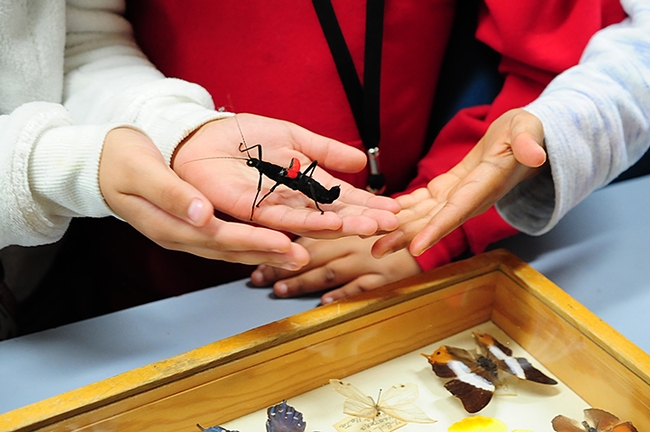
This Peruvian walking stick will be among the featured insects at the Bohart Museum of Entomology. (Photo by Kathy Keatley Garvey)
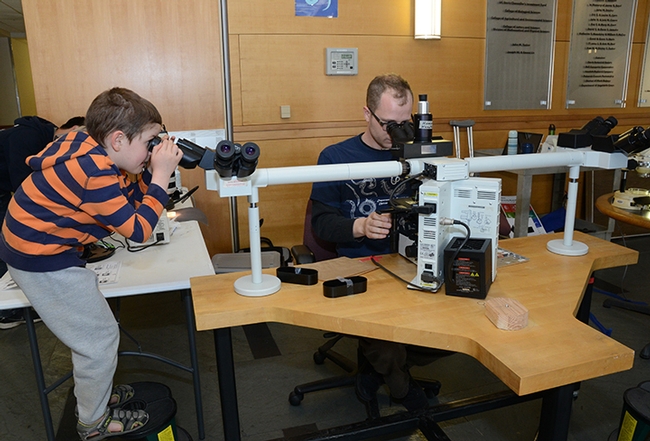
UC Davis graduate student and nematologist Corwin Parker looks through a microscope while a young visitor does the same. (Photo by Kathy Keatley Garvey)
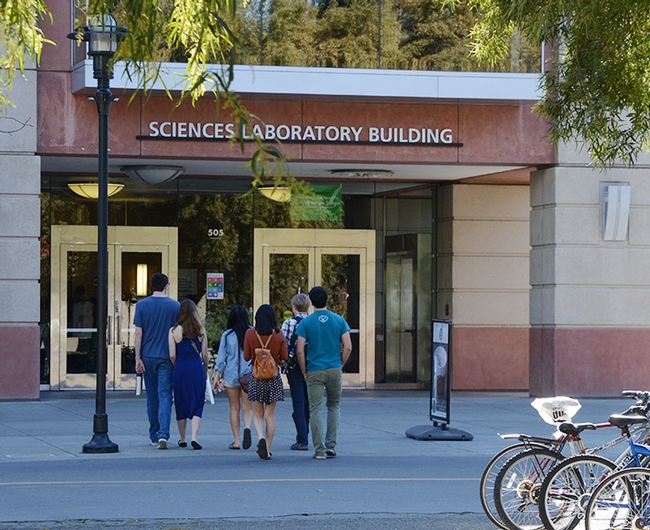
Early visitors to the Sciences Lab Building to see the Center for Plant Diversity and the Nematode Collection. (Photo by Kathy Keatley Garvey)